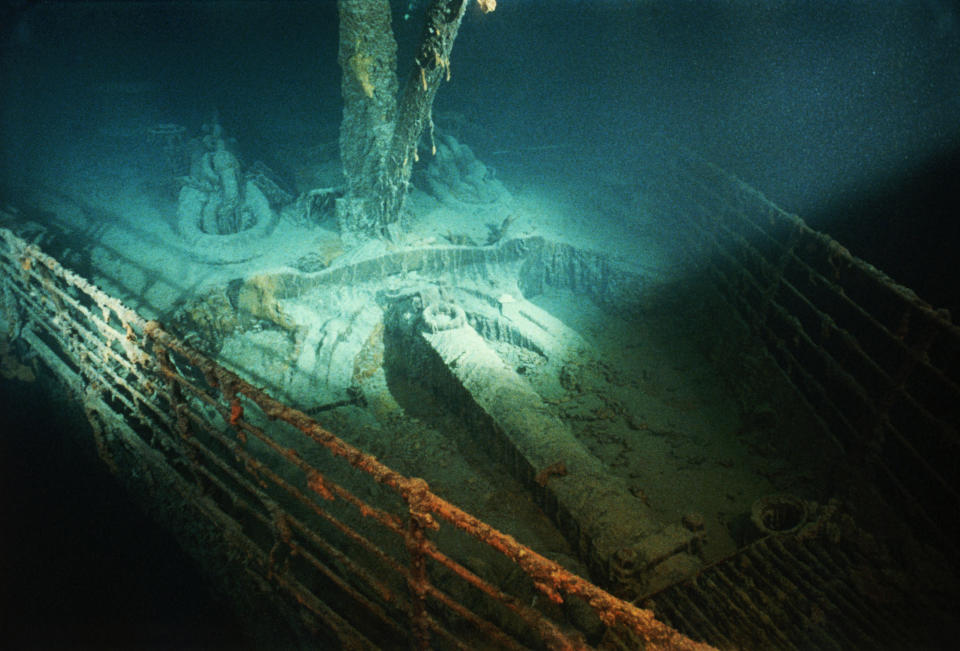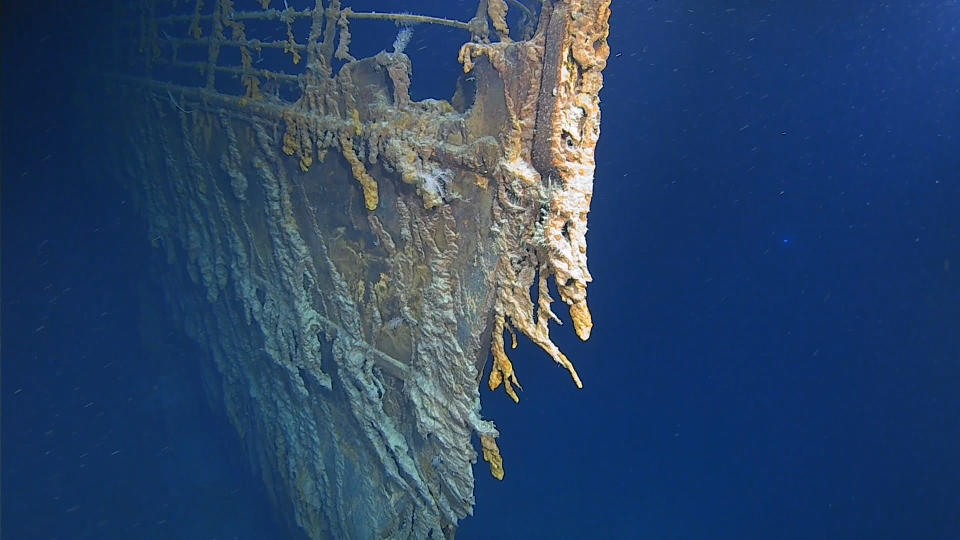First ever 4K Titanic images reveal doomed liner 'is starting to collapse'
The first expedition to the Titanic in 14 years has revealed the ship has started to collapse.
Explorers on the first manned voyage to the wreckage of the stricken liner discovered that the ship’s hull has partially collapsed thanks to salt corrosion and metal-eating bacteria.
Exploration company Caladan Oceanic said a team of divers have found that the hull near the officers’ quarters on the starboard side of the ship has started to collapse, taking with it the vessel’s luxurious stateroom accommodation.


Titanic historian Park Stephenson said the deterioration of the ship is “shocking”, adding: “That whole deck hole on that side is collapsing, taking with it the staterooms, and the deterioration is going to continue advancing.
“Captain’s bath tub is a favourite image among the Titanic enthusiasts, and that’s now gone.”
READ MORE
The story of Titanic in pictures
Items from Titanic sister ship to be auctioned
Titanic shipyard Harland and Wolff to go into administration
The first ever 4K quality images of the ship, which lies 4,000m (13,125ft) under the surface of the Atlantic, were captured during the expedition and will be published alongside a documentary, which is being made by film company Atlantic Productions.
The footage will also make it possible to view the wreckage using interactive augmented reality and virtual reality technology.

Explorers made a total of five dives to the wreck, which lies around 370 miles (596km) south of Newfoundland in Canada, over eight days using a submergence vehicle.
Victor Vescovo, who is also chief executive of Caladan Oceanic, said he “wasn’t quite prepared” for how large the wreckage is.
He said: “It was extraordinary to see it all, and the most amazing moment came when I was going along the side of the Titanic and the bright lights of the submersible reflected off a portal and came right back – it was like the ship was winking at me.
“It was amazing.”

Scientist Lori Johnson said the Titanic is “going to continue to deteriorate over time” as part of a natural process, which sees bacteria act like “a community working symbiotically to eat” the wreckage.
The liner, built by Belfast’s Harland and Wolff shipyard, sank after hitting an iceberg on her maiden voyage from Southampton to New York in 1912, leaving more than 1,500 people dead.



